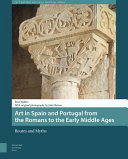Author
Harper; Richard
Year
2000
Publisher
Council for British Research in the Levant (CBRL)
Type
BOOK
Category
History
Language
English
Pages
274
ISBN
978-0-19727-009-7
Last Update
31-Oct-2024
Keywords
Archaeology
Related
See More
Grundlagenforschung zum Dualen System und Kompetenzentwicklung in der Lehrerbildung

Acupuncture for Major Depressive Disorder, A Systematic Review, A Systematic Review

El tirano en la América Latina

Art in Spain and Portugal from the Romans to the Early Middle Ages, Routes and Myths

Fabricate 2020

Feeling Strangely in Mid-Century Spanish and Latin American Women�s Fiction, Gender and the Scientific Imaginary